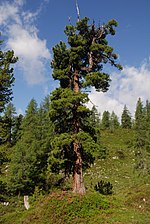Portal:Biologia
| Strona główna portalu | Kynologia | Jak powstaje biologiczna zawartość Wikipedii |
|
Media użyte na tej stronie
Autor: Credit to - user Ballista from the English wikipedia., Licencja: CC-BY-SA-3.0
Skull of Pachycephalosaurus at the Oxford University Museum of Natural History.
Autor:
- Symphytum_officinale_12_ies.jpg: Frank Vincentz
- derivative work: Kenraiz (talk)
background Symphytum leaf
Autor:
- derivative work: Jsdo1980 (talk)
- Newspaper_Cover.svg: Source works and User:Tkgd2007
Newspaper SVG
Autor:
- derivative work: Masur based on:
- File:HSDagensdatum.svg: Jsdo1980 (talk)
- Nuvola_apps_date.svg: David Vignoni, User:Stannered
Ikona na główną stronę - Kalendarium
Autor: Althiphika, Licencja: CC BY-SA 4.0
Icône HS de File:Nuvola apps bookcase.svg
© 2010 Jee & Rani Nature Photography (License: CC BY-SA 4.0)
Owlflies are dragonfly-like insects with large bulging eyes and long knobbed antennae. They are neuropterans in the family Ascalaphidae; they are only distantly related to the true flies, and even more distant from the dragonflies and damselflies. They are diurnal or crepuscular predators of other flying insects, and are typically 5 cm (2.0 in) long.
The Ascalaphinae are the namesake subfamily of the owlfly family (Ascalaphidae), winged insects of the order Neuroptera. Most are found in the tropics. Their characteristic apomorphy is the ridge which divides each of their huge compound eyes; they are thus known as split-eyed owlflies.
According to D. E. Kimmins, "In the Asiatic species there may be specialized tufts of hairs on the prothorax, the prescutum and the supra-episternum, and in addition there may be a small triangular lobe on each side of the mesoscutum. The angle formed by the anal lobe of the fore wing has also been found of service in associating males and females. These specialized hairs on the thorax are also found in some of the African species of Helicomitus, and in other species, tufts of similar hairs occur on the costal margin of the fore wing at the base, directed basally. The purpose of these curious tufts of hair is not known, but it seems likely that they may have some connection with scent diffusion."
This is Ascalaphus sinister Walker, 1853, male (Identified by Joshua R Jones at Texas A&M University.) Helicomitus sinister (Walker, 1853) and Ogcogaster sinister (Walker, 1853) are synonyms.
Specification as in D. E. Kimmins' revision on 1949: "Male – Antenna slightly angled near base, but neither ciliate nor serrate. Posterior margin of pronotum simple, lateral angles with a tuft of short brown sets in addition to the normal long hairs. Prescuturn with lateral angles not specially swollen or elevated, outer third of posterior margin with a fringe of short brown setae. Mesoscutum without processes. Supra-episternum with a dense patch of short brown setae along its upper edge. Wings rather narrow, apices acutely rounded, angle of anal lobe less obtuse than in H. dicax. Fourth tergite of abdomen very slightly swollen, 4–5 with scattered, long, fine, black setae.
Female – Frons rather swollen, vertex elevated and with long hair. Anal lobe as in male. Abdominal tergites yellowish, narrowly bordered with fuscous, which is not widened apically and basally."
Taken at Kadavoor, Kerala, India.Autor:
- HSBild.svg : Jsdo1980
- derivative work : Masur
Ikona na główną stronę - InM
Autor:
- HSVissteduatt.svg: Jsdo1980
- Text-x-generic_with_pencil.svg: The people from the Tango! project, modifications by User:Father Goose.
- derivative work: Dodoïste (talk)
An icon derived from the Tango! set.
Autor: Tigerente, Licencja: CC BY-SA 3.0
Pinus cembra Near Kleinmölbing, ~ 1700 Meters, Styria, Austria
Autor:
- derivative work: Jsdo1980 (talk)
- Crystal_Clear_action_bookmark.svg: Everaldo Coelho and YellowIcon (svg version by Actam)
An icon from icon theme Crystal Clear (svg version).















